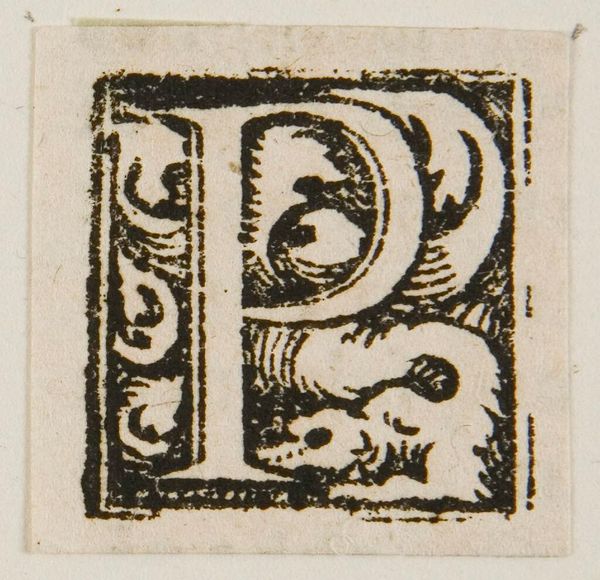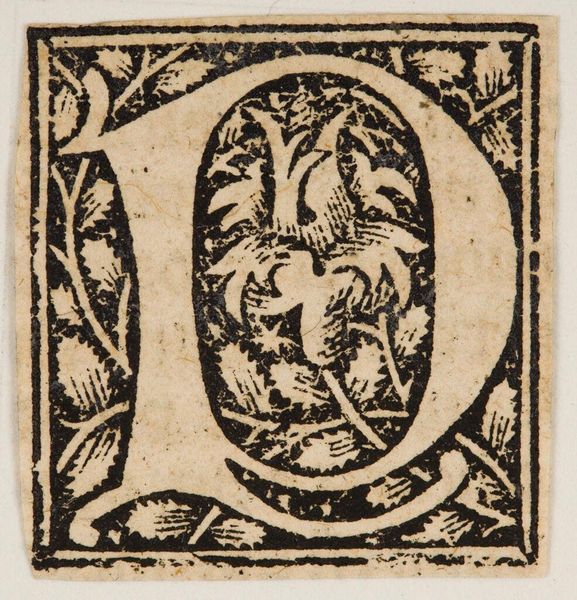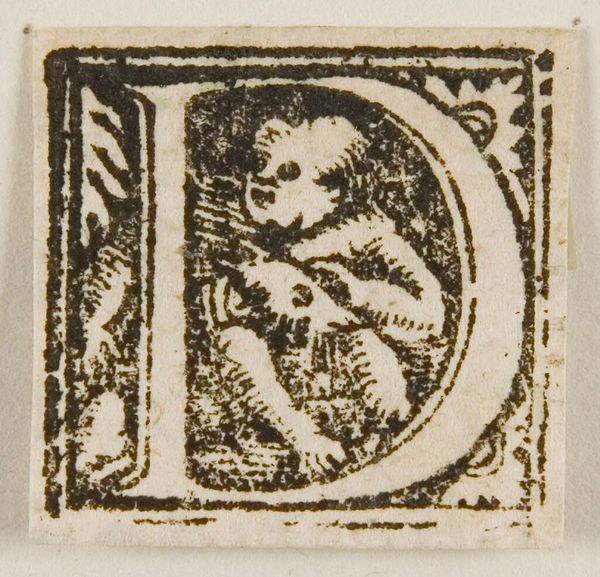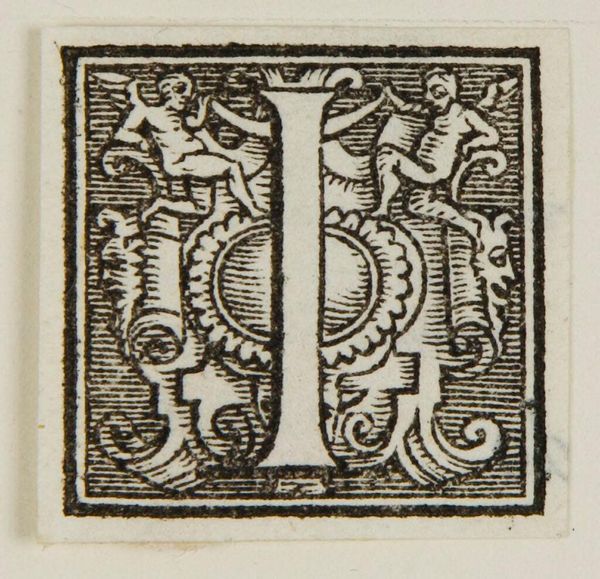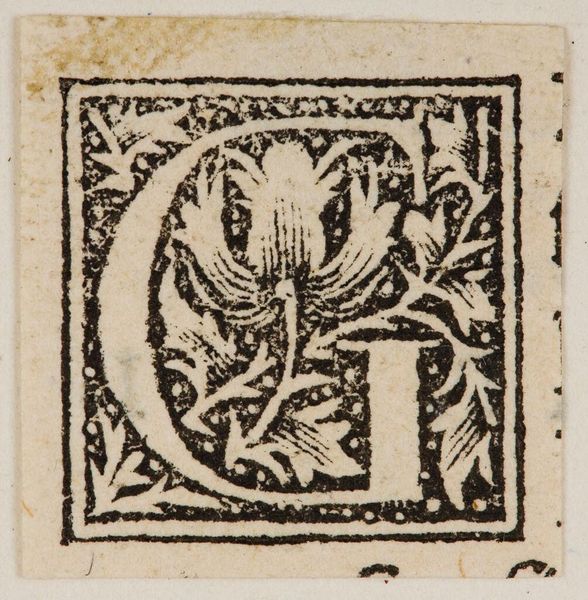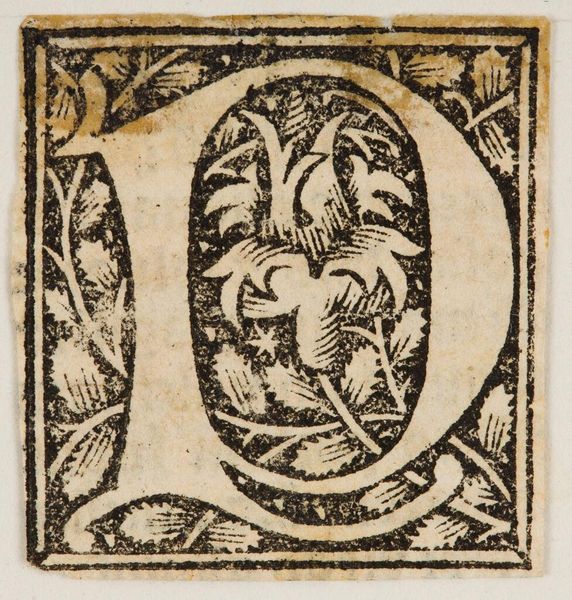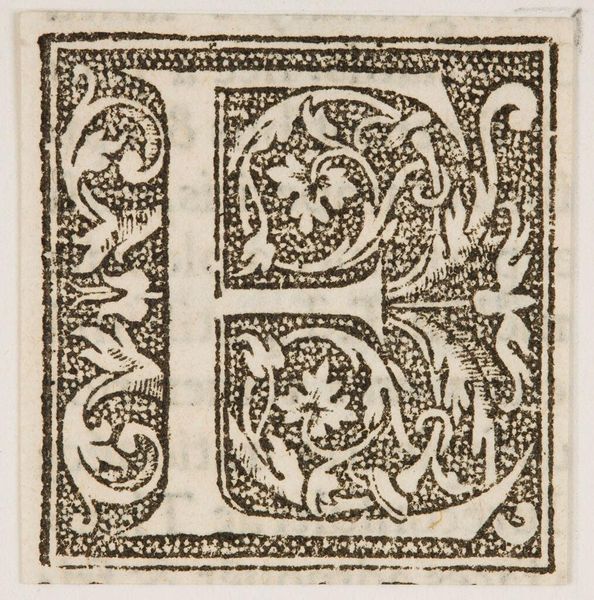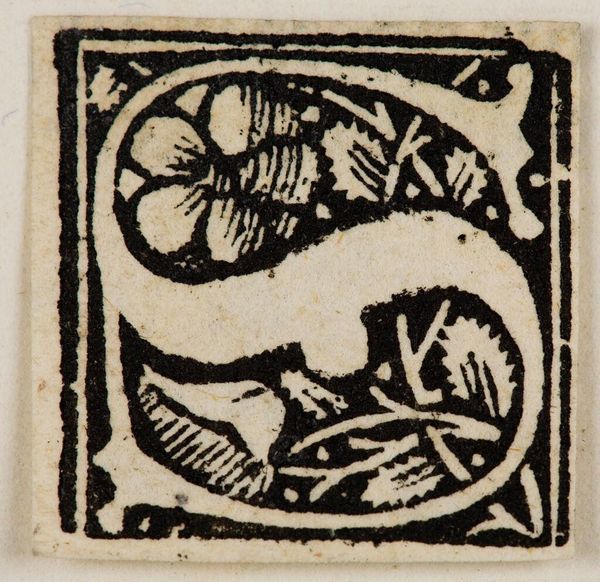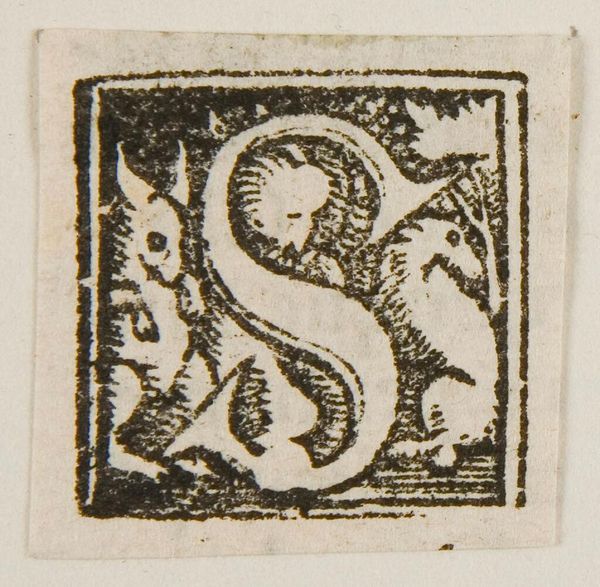
Copyright: CC0 1.0
Curator: At the Harvard Art Museums, we have a striking woodcut: Holbein the Younger's "Letter D." It's a captivating example of his skill. Editor: It has a rather somber tone, wouldn’t you say? The density of the black ink creates a weighty feel, almost oppressive. Curator: Indeed. Holbein created these alphabet initials during a period when printmaking was becoming increasingly important for disseminating information and asserting power. Editor: The details are incredible—the way the fur of the bear is rendered with such fine lines, the contrasting negative space of the letter itself. It's a testament to the expressive possibilities within such a constrained medium. Curator: These decorated initials were important signifiers, employed to mark the start of significant texts and signal the importance of particular messages. Editor: Thinking about it, the bear's presence lends the letter a rather imposing aura, hinting at the force and authority that the letter, and by extension, the text it introduces, might carry. Curator: Absolutely. The choice of the bear also adds a dimension of symbolism and perhaps a reflection of the social dynamics of the time. Editor: Yes, it’s a complex piece. One can appreciate how Holbein’s artistry elevates a mere letter into something deeply meaningful.
Comments
No comments
Be the first to comment and join the conversation on the ultimate creative platform.
